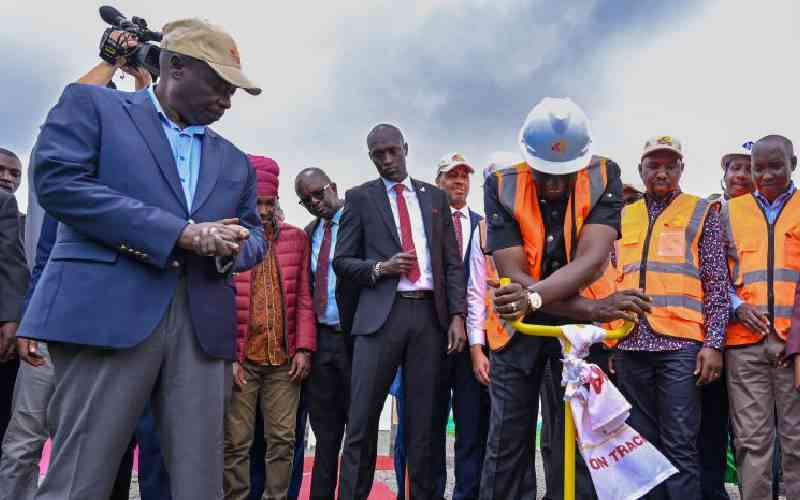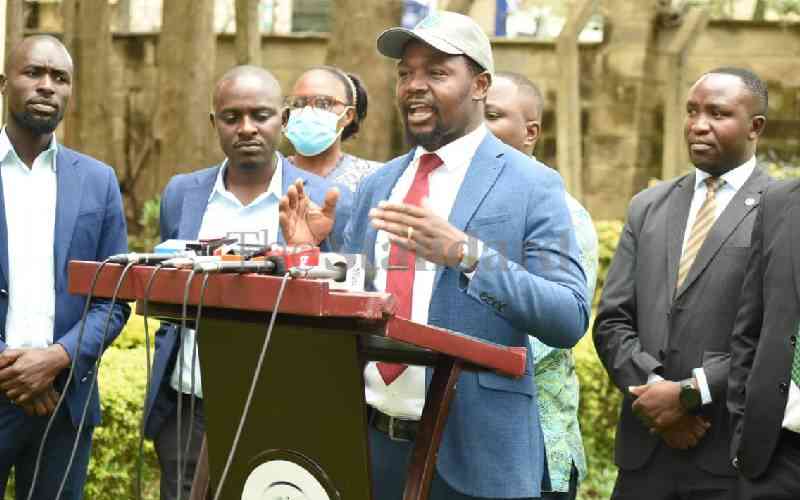Kenya has failed to resolve the transport crisis in Nairobi despite a Sh30 billion loan from World Bank.
The money, given six years ago, has not been utilised.
Among others, the loan was to fund construction of a commuter rail and the much-touted Bus Rapid Transport (BRT) that was to be completed by December 31.
Completion of the project would have spared Nairobians the pain of the matatu ban from the Central Business District.
Kenya was expected to contribute Sh11.6 billion towards implementation of the project.
A chunk of the funds was to help in decongesting the city by building an elevated road from Jomo Kenyatta International Airport to Westlands, christened Ndovu line.
Transit corridors
Another Sh6 billion was to fund development of selected mass transit corridors on the major highways, including Mombasa Road, Thika Highway and Outer Ring Road.
In a status update three years after the loan was granted, World Bank protested implementation of the project and gave a “Moderately Unsatisfactory” remark.
At that time, just about Sh800 million had been drawn against the target of Sh5 billion, to inform the reservations by the lender who also profiled the project risk as “substantial”.
Politics stood in the way of forming the implementing agency, the Nairobi Metropolitan Transport Authority (Namata), partly explaining delays in getting the plan into action.
Governors from five counties were concerned the agency would erode their influence in the lucrative project which would include acquisition of the high-capacity passenger buses.
Initial plans to acquire the buses from a South African vehicle assembling plant pointed to the behind-the-curtains struggles on procurement.
Nairobi-based Isuzu East Africa was settled on as the prospective supplier of the buses whose capacity could be as high as 100.
Limited railway coverage in the city means ferrying commuters on BRT would be the only realistic solution to the chaotic public transport in Nairobi and its environs.
Stay informed. Subscribe to our newsletter
Speaking during a recent interview, Transport Cabinet secretary James Macharia said the project would ease traffic jams.
“Operating BRT is a complex process that will take time to design. It also requires a lot of resources, meaning it will not be immediate,” he said, placing its cost at Sh6 billion.
High capacity
Seven months ago, he made the first attempt to dedicate a lane for high capacity passenger buses and vehicles responding to emergencies such as ambulances on Thika Road.
But today, any driver is allowed on any lane on the highway meaning the attempt may have been an exercise in futility.
Little thought was given to marking the innermost lane in pink to warn ordinary motorists that it was reserved. Also, there was no way to enforce the directive, especially because the intended buses have never been acquired.
In the BRT plan, there will be several lines running parallel and linking the city and the environs.
“Ndovu line' is expected to run from Kangemi to Imara Daima, ‘Simba’ from Rongai to Kenol in Murang’a and ‘Chui’ from Tala to Ngong. ‘Nyati’ corridor will run from Kiambu to Imara Daima while ‘Kifaru’ will run from Kayole to Ngong.
 The Standard Group Plc is a
multi-media organization with investments in media platforms spanning newspaper
print operations, television, radio broadcasting, digital and online services. The
Standard Group is recognized as a leading multi-media house in Kenya with a key
influence in matters of national and international interest.
The Standard Group Plc is a
multi-media organization with investments in media platforms spanning newspaper
print operations, television, radio broadcasting, digital and online services. The
Standard Group is recognized as a leading multi-media house in Kenya with a key
influence in matters of national and international interest.
 The Standard Group Plc is a
multi-media organization with investments in media platforms spanning newspaper
print operations, television, radio broadcasting, digital and online services. The
Standard Group is recognized as a leading multi-media house in Kenya with a key
influence in matters of national and international interest.
The Standard Group Plc is a
multi-media organization with investments in media platforms spanning newspaper
print operations, television, radio broadcasting, digital and online services. The
Standard Group is recognized as a leading multi-media house in Kenya with a key
influence in matters of national and international interest.





